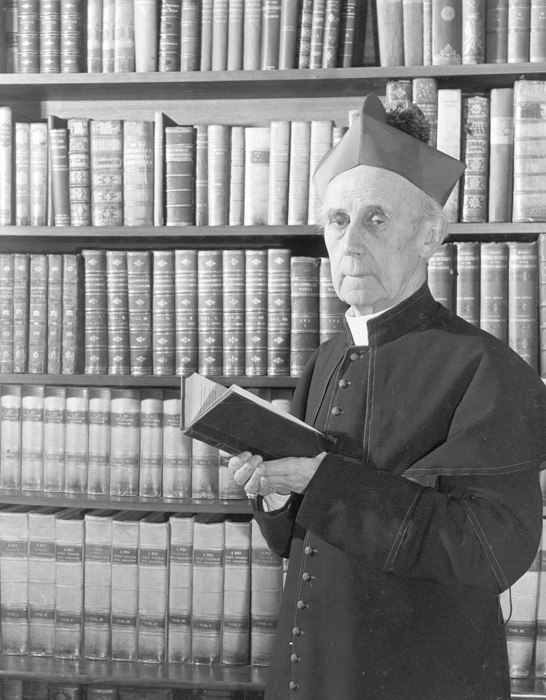Daniel Mannix, Catholic archbishop of Melbourne was a controversial figure during World War I. Although he took little part in the first conscription debate in 1916, he was more active in 1917, when he addressed large crowds opposing conscription.
Mannix was born in Ireland into a prosperous farming family of devout Catholics. He was well educated and an able scholar, qualifying for a doctorate in divinity in 1895. Also in 1895 he took up a lectureship and then a chair in moral theology at St Patrick's College, Maynooth, where he remained until appointed to the see of Melbourne in 1912. It has been suggested that Mannix's indifference (some said hostility) to Irish nationalism precluded his appointment to a bishopric in Ireland.
At his inauguration address in Melbourne on Easter Sunday 1913 Mannix said that he hoped to be a good Australian and to see Catholics 'share in the good things in private and public life'. He began almost immediately to campaign for state aid to Catholic schools.
Although Mannix appears to have supported Britain's declaration of war in 1914, he took no active role in recruiting, and refused to support Prime Minister Billy Hughes in the first conscription campaign, commenting that Australia was 'doing enough'. The Easter Uprising in Ireland in 1916 and Britain's brutal response to it upset him and may have helped to harden his attitude to conscription in Australia. But it is likely that Hughes' intemperate personal attacks on Mannix after the failure of the first conscription referendum in October 1916, seriously antagonised the then Coadjutor Archbishop. By 1917 he was an open opponent of Hughes and of conscription.
Mannix was consecrated Archbishop of Melbourne in 1917. His rhetoric increasingly aligned with the labour cause and against conscription. In November he addressed a huge meeting (some estimated as many as 100,000 were in attendance) at the Richmond Racecourse, after the Exhibition Building's trustees refused him access to the big hall there. When a majority of Victorians supported the 'No' cause in the 1917 referendum, Hughes blamed Mannix for the change (along with German Australians, the Industrial Workers of the World (IWW), women and any others he could think of). Although Mannix's influence on the overall vote was probably less than Hughes thought, the second referendum debate certainly saw a substantial rise in sectarianism, which partly reflected the confrontational style Mannix adopted. He was reviled by many Protestants, but also alienated some more moderate Catholics. A bit like Billy Hughes, Mannix inspired both love and loathing in equal measure.
His long career as archbishop continued to be marked by controversy, but he remained in office until his death at the age of 99 on 6 November 1963, just as the church was embarking on Vatican II. On his death the cathedral bell tolled 99 times, at one minute intervals and there was a 13 gun salute, but no large public procession, at the Archbishop's own request.
Further reading
James Griffin 'Mannix, Daniel (1864-1963)', Australian Dictionary of Biography http://adb.anu.edu.au/biography/mannix-daniel-7478
James Griffin Daniel Mannix: Beyond the Myths Mulgrave, Garrett Publishing, 2012
Brenda Niall Mannix Melbourne, Text Publishing, 2015

